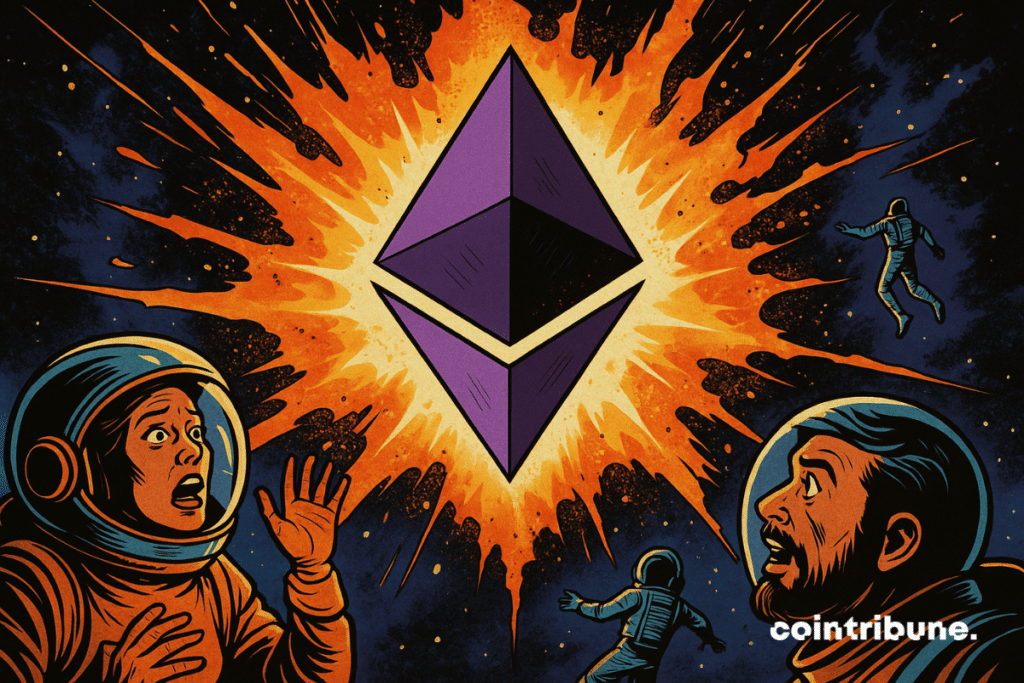Here Is Why Ethereum Is Betting Big On Institutional Staking
Since the announcement of the Pectra update, part of the crypto community has been expressing concerns. The increase of the staking cap to 2,048 ETH fuels fears of centralization. Some fear a takeover by large institutions. But Ethereum, like a good firefighter, tries to extinguish the flames of doubt. Mallesh Pai and Consensys aim to reassure. Are the dice already loaded?

In Brief
- Pectra integrates 11 EIPs and raises the staking cap to 2,048 ETH for validators.
- Ethereum targets institutions with simpler functions and more profitable staking.
- Obol strengthens security through distributed validators, adopted by Lido, EtherFi, and Swell.
Pectra: between technical promises and suspicions of elitism
Pectra marks a major turning point in the history of Ethereum. With 11 onboarded EIPs, it is the densest update since The Merge. Among the most awaited: EIP-7251, which raises the staking cap to 2,048 ETH. The 32 ETH per validator limit is over. The goal: to attract institutional investors while reducing the technical burden of the network.
Behind this consolidation is a clear intention: to simplify the role of validators. But this concentration worries some. They see it as a betrayal of the principle of decentralization. Mallesh Pai, a researcher at Consensys, dismisses these criticisms. According to him:
Rewards remain proportional to the ETH staked.
Big validators have, he says, no additional advantage. For him, the Pectra update only “removes unnecessary work“. He stresses: the number of validators could drop to 30,000 without loss of security. A well-rehearsed argument, but not universally convincing.
Institutions, ETFs and security: towards tailor-made ETH staking?
The new architecture opens the door to big players. Institutions, long in the background, are entering the dance. BlackRock advocates for a ETH ETFs with integrated staking. The SEC hesitates, but the stake is clear: to offer returns to investors. Artemiy Parshakov from P2P.org confirms the appeal of post-EIP-7002 staking. He speaks of simpler integration, with less risk.
Eric Balchunas from Bloomberg remains cautious. He thinks that the impact of ETFs would be limited if the price of Ethereum does not take off.
But behind the scenes, protocols are adapting. Obol, a pioneer of Distributed Validator Tech, offers a system without a single point of failure. Each validator is distributed across several operators. Advantages: increased security, transparency, fault tolerance. Lido, EtherFi, Bitcoin Suisse, and Swell adopt this solution. Obol becomes the backbone of institutional staking. And with its OBOL token, the ecosystem gains in governance and coherence. Vitalik Buterin himself praises this model as a pillar of the future Ethereum.
The numbers shaking Ethereum: a risky bet?
The numbers speak for themselves:
- 2,048 ETH: new staking cap per validator (EIP-7251);
- 11 EIPs integrated in Pectra: a record;
- +800 DVT operators at Obol, securing more than $1 billion in staking;
- 23% of EtherFi’s TVL operates via Obol;
- 34 million ETH already staked on Ethereum.
The ambitions are clear: make Ethereum more scalable, more institutional, but also more technical. The EIP-7702 update transforms classic accounts into smart accounts. This allows for safer and more interactive wallets. Pectra also doubles the capacity to process blobs for Layer 2.
Result: more data per block and reduced fees. This should attract both developers and users. But centralization lurks. Consolidating validators means reducing the number of unique actors. The network’s resilience will depend on the adoption of technologies like DVT. Without this, the dream of a truly decentralized Ethereum could slowly erode.
Ethereum’s decentralization does not convince everyone. Charles Hoskinson, former No.1 of Cardano, already speaks of a “dictatorship” in the hands of Vitalik Buterin. The debate remains open, but criticisms are multiplying.
Maximize your Cointribune experience with our "Read to Earn" program! For every article you read, earn points and access exclusive rewards. Sign up now and start earning benefits.
La révolution blockchain et crypto est en marche ! Et le jour où les impacts se feront ressentir sur l’économie la plus vulnérable de ce Monde, contre toute espérance, je dirai que j’y étais pour quelque chose
The views, thoughts, and opinions expressed in this article belong solely to the author, and should not be taken as investment advice. Do your own research before taking any investment decisions.